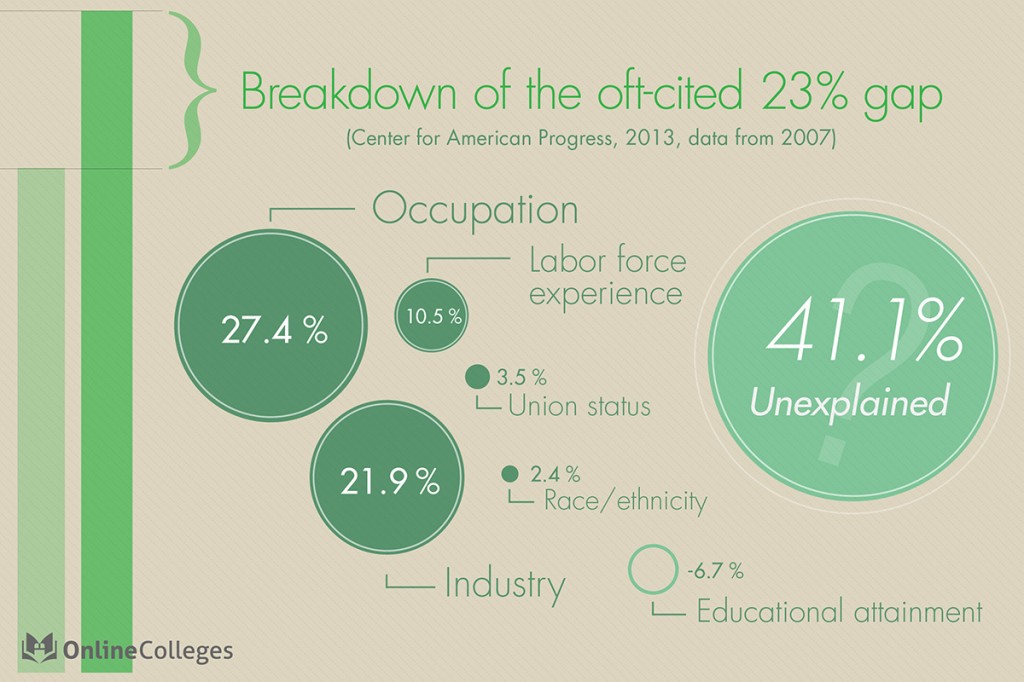By Kim Adamski
Women are making 77% of what their male counterparts make. You’ve probably heard this oft-repeated statistic a hundred times. Conservatives often shoot down this statistic, saying that it doesn’t take into account that women are more likely than men to take part-time or lower-paying work than men, or that women are more often stay-at-home parents. This is not entirely inaccurate. A small but significant part of the wage gap is due to the nature of the work men and women tend to do. According to studies at universities such as Harvard and Stanford, most of the pay gap cannot be explained purely by economic factors; indeed, only between fifteen and thirty percent is related to job type correlations. The rest of the variation is likely due to gender discrimination, which employers (often unconsciously) allow to affect their hiring and salary decisions.

41% of the wage gap cannot be explained by factors such as education, industry, or non-gender-related discrimination.
The perception of women as primarily mothers, secondarily workers contributes greatly to this discrimination. For example, a company might prefer to hire a man than a woman of the same age due to the risk that she might take leave or even quit should she become pregnant. This is backed up with evidence from countries in which companies are required to offer both parental leave for all genders, such as Sweden, which have lower pay gaps than the U.S. That’s not to say there is no pay gap at all in these countries; it has proven difficult to get men and women to take equal parental leaves. Partly because of tradition, but also partly because women tend to be lower-paid, it makes sense for them to take the leave. It’s kind of a vicious circle, because it is difficult to legislate away subtler forms of discrimination.
The pay gap is further complicated when demographic factors such as race are brought into the picture. Non-white women are paid even less in comparison to men than are white women. Interestingly, non-white women and men have a much smaller wage disparity than do white women and men. This shows that while gender is an important factor in equal pay, race is an even bigger factor – non-white men and women are both being paid much less than are white men. This is known as intersectionality – the idea that all social justice issues (racism, sexism, ableism, etc.) are inextricably tied, and we cannot address one without addressing all. While legislation can help, the only way to truly eliminate all pay disparities is to trigger a cultural shift through education and exposure to diverse populations.
Kim Adamski co-hosts a public affairs show on WHUS called Full Frontal Feminism with DJ KBham. Find more information on their Facebook page, facebook.com/fullfrontalfeminism.


![040814paygap[1]](http://whus.org/wp-content/uploads/2014/06/040814paygap1-208x300.jpg)